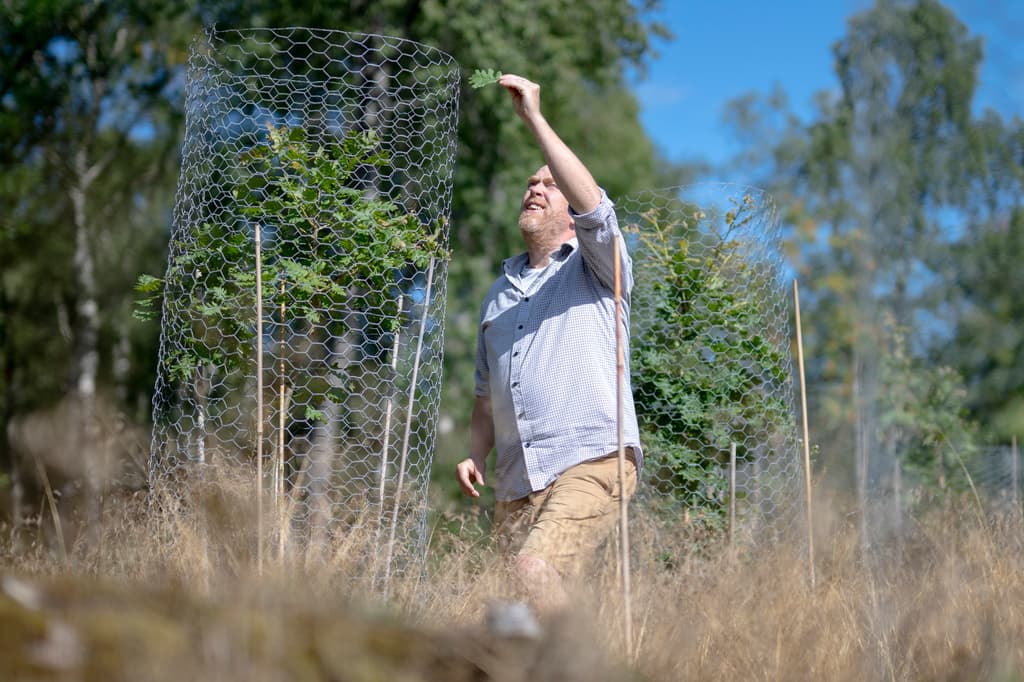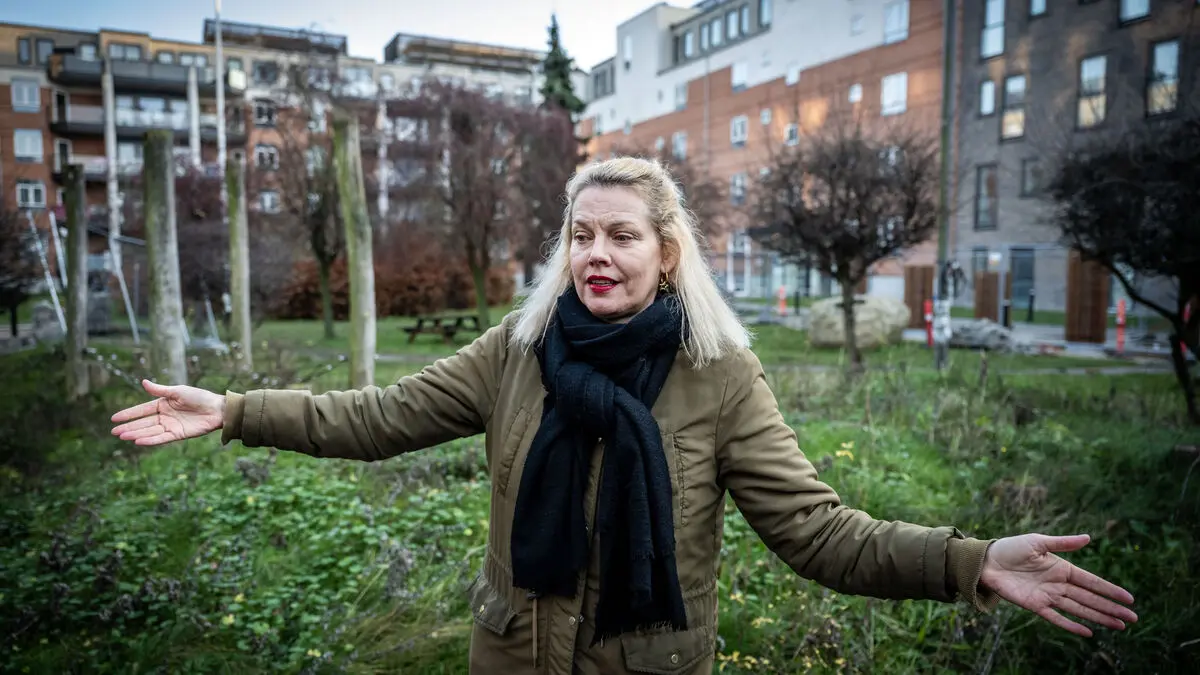In a particularly sunny south-facing slope in the botanical garden's area, a group of trees with origins in Romania's steppe forests, by the Black Sea, stand. The species are Hungarian oak and linden.
They come from an environment with significantly warmer and drier summers, compared to our Swedish ones. But they can still handle a really long, cold winter, says Henrik Sjöman.
The trees were planted a few years ago.
We collect data from the trees to learn more. This is a long-term evaluation, which is required for us to learn how to match trees to location, climate, and so on, says Henrik Sjöman.
Leaves protect the trees
Both Hungarian oak and linden have fairly thick and rough leaves, which can retain moisture for a long time during a dry period.
A bit further away, there is a cultivation of silver lindens. When the sun beats down, they turn their light-colored underside upwards, so that the heat is reflected away from the tree.
Maybe it's such species that will provide shade and slow down heavy rainfall in our cities in 50, 70, or 100 years. When it comes to trees, you have to plan for the long term.
Urban environments are a challenge for plants. The large buildings retain heat, just like warm rocks. It can be several degrees warmer inside the city compared to outside the urban area.
The bigger the city, the greater the effect, says Henrik Sjöman.
The trees that exist in Swedish cities today will, generally speaking, have to struggle to cope with a climate with more heat and drought. They risk being affected by both diseases and pests.
We need to upgrade the plant material, says Henrik Sjöman.
In a tree nursery in Gothenburg's botanical garden, there are species that are native to Sweden. But these small specimens are from Romania. They are maple, oak, beech, and ash.
They are genetically adapted to the climate in southeastern Europe.
We will plant a beech forest with these, and compare with our native types of species.
"Torturous plant trials"
Some of the plants will be subjected to "torturous plant trials" in greenhouses.
We stress-test for heat, drought, and flooding, to see how they react, and possibly recover. And we do the same with native beeches, says Henrik Sjöman.
The goal of the tests on trees with foreign backgrounds is to gather facts about the different species' capabilities.
Today, the entire industry is based on guesswork. You think that "this one is probably drought-tolerant". We need to know how drought-tolerant, or how sensitive it is.
Henrik Sjöman also works for Kew Gardens in London. Together with several colleagues, he has written a debate article about his research in the scientific journal Plants, People, Planet.
Sjöman thinks that we in Sweden need to become more open to introducing plants from other countries.
There is resistance, among politicians and authorities, due to ignorance, he believes.
Has many foreigners
The major risk with introducing new species is that they can spread as weeds and become invasive. Research in botanical gardens around the world can counteract this.
Incredibly thorough studies are being made of how species behave.
In Gothenburg's botanical garden, there are many species that normally do not grow in Sweden.
If we see something that starts to become weedy, we remove it. If it's something that's cultivated elsewhere in the country, we report on our experiences.
There are foreign species that have been cultivated in Sweden for several hundred years without becoming weeds. For example, magnolia, various maples, and American lindens, emphasizes Henrik Sjöman.
Trees are useful in urban environments in several ways:
They provide shade and coolness.
They absorb water and can thus mitigate the consequences of heavy rainfall.
They can filter the air from particles that are harmful to humans.
They can provide wind protection.
Greenery helps people feel comfortable.
For trees to provide these benefits, they need to be vigorous, preferably with large tree crowns.
Source: Gothenburg's botanical garden





